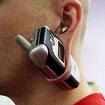Windows 7 (Seven) Ultimate Edition Fully Activated For Ever (32/64Bit) Windows 7 (Seven) Ultimate Edition Fully Activated For Ever 32/64-bit English DVD ISO Bootable Pre-activated Size: 3.47 GB

Install:- Download and extract using WinRAR.- Use NERO to burn the ISO image called "faXcooL.Windows.7.Ultimate.ENG.x86-x64.ACTiVATED"- Burning speed should not be faster than 4x. Otherwise, it might not work.- Restart your computer.- Make sure you've seleceted your DVD-ROM/RW drive as a first boot device
* Enter the BIOS pressing the DEL button, set the option, insert your Windows 7 installation and restart computer.- The black screen will appear (image 01).- Press any key to boot from CD or DVD.... (by pressing the key you're entering the setup)- Select your language, time and currency and keyboard input (optionaly)- Click install now- Choose your edition (x86 is 32-bit, x64 is 64-bit) depending of CPU type you have.
*Choose x64 if you have 64-bit processor.- Click "I accept".- Click "Custom (advanced).- Choose your partition/hdd drive where Win7 should be installed and click format.
*You might get some error if you have two or more hard disks with different connectors (ATA and SATA).If you get an error, turn off one of your hard disks and repeat the whole proces.- After formatting, setup will continue automaticly and it will finish after 15-30 min.- Next step would be username (Image 17).- Type your password (if you want).- When you get the screen for CD-KEY just ignore it leaving blank.
*Uncheck the box for automaticly activation and click next.- Choose the third option for next step.- Select your time zone.- Select your current location (Home is recommended).- The black CMD windows will appear. Wait a few seconds until computers restares once again.- And that would be all about installation. You're in Windows now.
Activation:It's not required, because it's OEM. Windows will be premanently activated.However, it's well known that there is some problems with DELL and HP machines.So if you have issues with pre-activation you'll be forced to some activator to activate Windows 7.Use this Crack:
http://rapidshare.com/files/321569932/Crack_DGN_CW.rar
1- Remember When Windows is finalizing Its Installation There Will Be A Black Screen Appear (cmd) Prompt It will Stay Blinking for about 2 to 10 mins Depending on the system you are using Then It Will say ***-***-***-***-**** Key Installed Successfully Then It Will restart Automatically. Then U can go to My computer`s Properties U Will See Windows Is Activated.
2- DELL and HP machines, Use an Activator or the crack supplied if anything. 80% the activators will work meanwhile the other 20% depends on how old your Laptop/Computer, If you did an Upgrade you'll have to use an Activator regardless because this Version was made for a fresh installation.
3- If you do not want to be forced to use an activator I'd do a Custom install but you don't really have to format your driver due to the fact that Windows 7 will just overwrite your current windows and put the old windows in a folder called "Windows.old" where your previous windows installion files are kept. And it's optional if you choose to deleted the olf folder because the drivers are "surpisingly" there after installation. Make sure you are connected to the internet before and after the installion (meaning that when your ready to set up your connection.Go for the fresh Installation if you dont really have important programs you can easily re-install at a later time.





